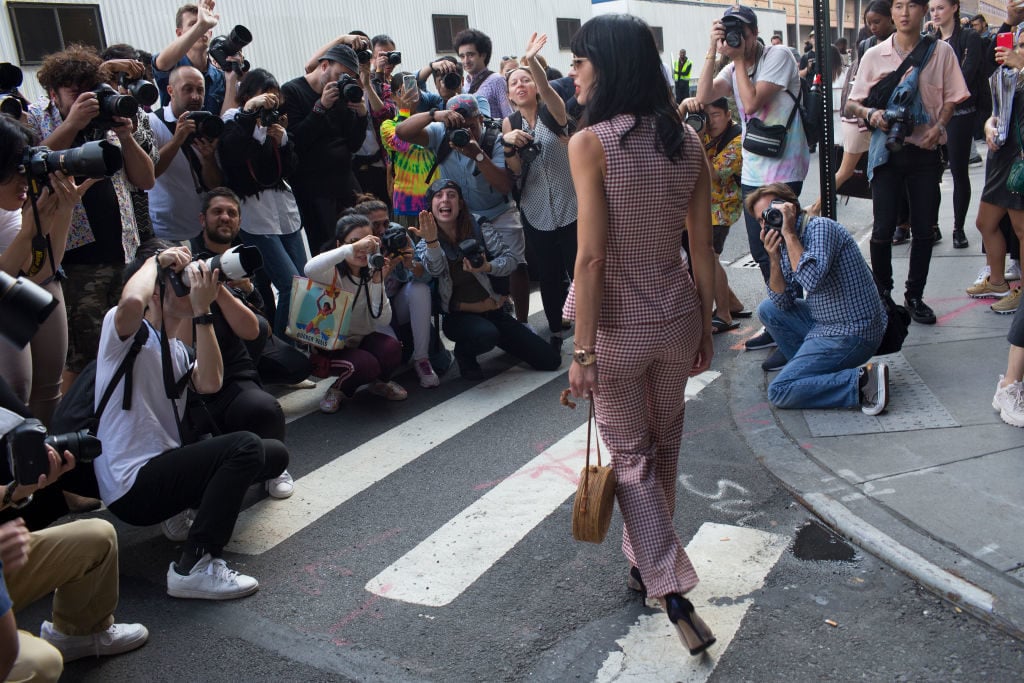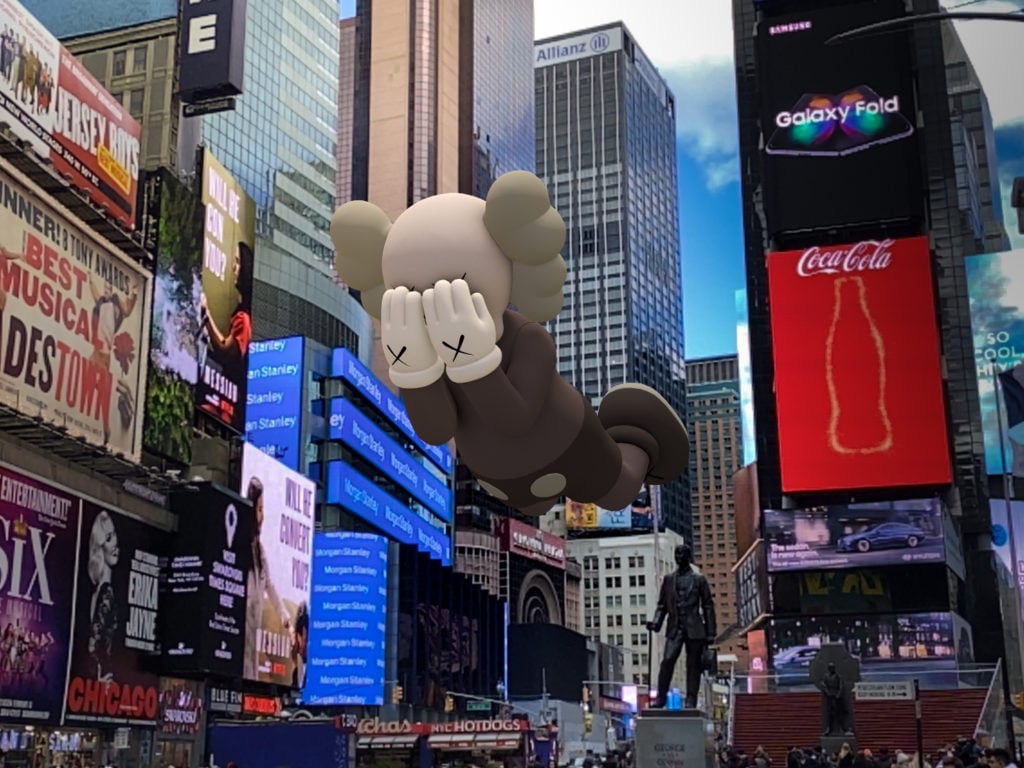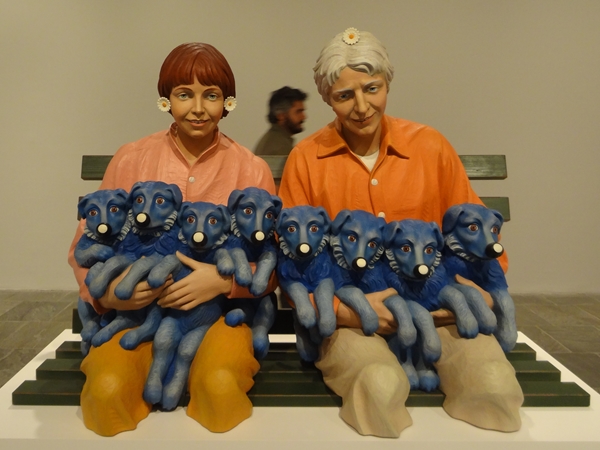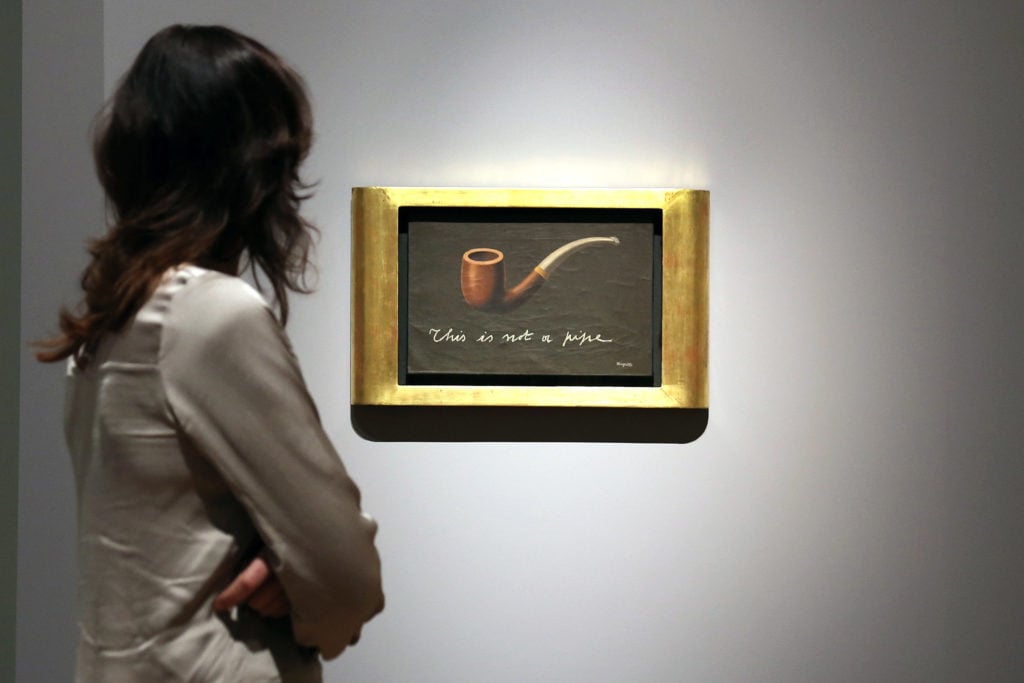Opinion
Can I Put a Paparazzi Photo in My Artwork? + Other Thorny Artists’-Rights Questions, Answered
Are memes fair use? What's the deal with AR licensing? We're here to answer questions about what you (and others) can do with your artwork.

Are memes fair use? What's the deal with AR licensing? We're here to answer questions about what you (and others) can do with your artwork.

Have you ever wondered what your rights are as an artist? There’s no clear-cut textbook to consult—but we’re here to help. Katarina Feder, a vice president at Artists Rights Society, is answering questions of all sorts about what kind of control artists have—and don’t have—over their work.
Do you have a query of your own? Email [email protected] and it may get answered in an upcoming article.
I’m making t-shirts to raise funds for COVID-19 relief, and I’d like to use an image from a painting I created and subsequently sold. Do I have to consult the person who now owns the painting before I do that?
Reader, you are wholeheartedly encouraged to make that t-shirt, and you do not need permission from the person who owns the work. Once a work of art is sold, the physical object no longer belongs to you, but the underlying copyright still does, and always will.
Copyright is a form of protection provided by law to the creators of “original works of authorship,” which of course includes your creation. Copyright protection exists as soon as the work is created in fixed, tangible form. Word to the wise and even the not-so-wise: should you ever be asked by an entity to sign over your copyright (which you technically can do), just say no.
Of course, the letter of the law is different from questions of etiquette, and the person who purchased your painting may be a little surprised to see someone wearing the t-shirt in Bushwick. It wouldn’t hurt to drop them an email about your plan. If they’re a fan of your work, they’ll most likely be supportive, even flattered. And, heck, they just might buy a t-shirt.

KAWS, COMPANION (EXPANDED) in Times Square, New York, 2020, augmented reality. Courtesy: KAWS and Acute Art.
I work in fashion and for the past couple of weeks, I’ve been licensing filters made by augmented reality (AR) artists for use in a forthcoming advertisement for a brand. Are the rights involved with AR different?
There is no shame in the licensing game. You would be surprised by how open artists are when it comes to licensing their work for commercial purposes. It can be an exciting way to collaborate with other creatives and see one’s work re-contextualized for a new audience. Our data shows that artist/fashion collaborations have ballooned in the last half-decade or so.
To answer your question: Standard copyright law is highly applicable here. Not only is original computer code automatically copyrighted—as a literary work, funnily enough—but work within a computer program is also copyrightable.
Allow me to draw your attention to the 2013 New York Southern District case of FireSabre Consulting vs. Cindy Sheehy. Sheehy, a teacher at Ramapo Middle School, contracted FireSabre, a digital design consulting agency, to build virtual classrooms for her students in SecondLife. (SecondLife, you may recall, is a video game that is kind of like the Sims mixed with Fortnite, only way less interesting than either.)
SecondLife sells parcels of digital real estate called “islands,” which are essentially blank slates that could be customized by users, a process called “terraforming.” Sheehy hired FireSabre to build a variety of things on her islands for her students: a train station, a cafe, music shops, and, of course, a volcano. But after FireSabre and the school had a falling out, Sheehy argued that her students still had a right to use FireSabre’s designs. It wasn’t like FireSabre owned SecondLife, she said, and besides, the islands were fluid entities that could be un-terraformed and re-terraformed as she or her students saw fit. What’s the point of even having a volcano if you’re not going to use it, right?
The court ruled against her all the same, noting that just because “someone else could come along and, with or without permission, alter the original piece of art does not mean the art was too transitory to be copyrighted in the first place.” So, yes, art made in video games, virtual reality, and augmented reality is just as protected as art made in paint or clay—so be sure to pay those AR artists, too.
I’ve been working on a series of photo collages that involve using paparazzi shots. Hypothetically speaking of course (wink wink), would I need to pay the paparazzi who took the photo of these two beefcakes if I were to, say, cut them out and place them into a beautiful landscape photo that I took? It’s transformative, right? Hypothetically speaking of course…
Cakey though those beefs may be, you’re entering less friendly waters than the ones depicted in that photograph. Many experts have differing views on this issue, but as a general rule, unless you fundamentally change or alter the work, your version will not qualify as a “transformative use.”
A transformative use, or a transformative work, is not derivative. It does not offer a new spin or a riff on the original. It transforms it entirely, so that the resulting work is something new, and thus cannot conceivably serve as a market substitution for the work that it borrows from. (Not to get too lawyerly on you, but it’s helpful to know there is a four-factor test for fair use, which weighs the purpose of the new work, the type of work being copied, the amount of the source material being used, and the impact the new work might have on the market for the original.)

Jeff Koons, String of Puppies (1988). Photo: Benjamin Sutton.
Consider the 1992 case Rogers v. Koons. The professional photographer Art Rogers took an innocent photo of a man and a woman with their arms full of puppies; Jeff Koons found the picture on a postcard and gave it to his assistants with instructions on how to create a sculpture based on it. Koons actually went so far as to remove the copyright label from the postcard before giving it to his assistant—and requested that as much detail be copied as possible. Then, when he was sued by Rogers, he had the cojones to call the piece “transformative.”
The court disagreed, finding “substantial similarity” between his original photograph and the sculpture, concluding that the average person would recognize it as a copy. The court also determined that, just like a brown-and-gold “GUCCE” bag you can buy on Canal Street could hamper demand for the real thing, the Koons work could hurt the market for the original photograph and authorized derivative works.
If you’re asking yourself how a blue-chip sculpture could affect the market for a postcard, it all depends on weighting those aforementioned four factors of fair use. Another landmark case involving the artist from 2006, Blanch v. Koons, saw Koons appropriate a picture from a feature in Allure magazine: a pair of female feet clad in, appropriately enough, Gucci sandals. Market-wise, you might consider editorial magazine photography closer to fine art than the puppy photo—but the judge in this case did not, calling the Allure photo “banal rather than creative.” Savage. He ruled for Koons.
What you propose to do is in fact not that dissimilar from Koons’s work in the latter case. And collage as a form is fairly protected. Richard Prince has won many copyright cases because even though his collage works constitute blatant, gleeful theft, they transport images from one market (advertisements, girlie mags, ethnographic photography) to his own (that of the blue-chip art market). And your piece would, presumably, transport the image from the celebrity tabloid world to the fine-art world.
Then again, even if Prince wins, he is frequently sued. Legend has it that “paparazzi” was a term coined by the famed Italian director Federico Fellini, who took the name from an Italian dialect word that roughly translates to “the buzzing noise made by a mosquito.” You might find the paps no less annoying if you pursue this piece.
Are memes considered fair use?
One could make a solid case that memes—widely shared photos captioned with text that parodies a cultural symbol or idea—find their lineage within the canon of art history. Both Rene Magritte and Marcel Duchamp both had a strong early meme game. (You may recall that the father of Dada himself took a postcard of Leonardo da Vinci’s Mona Lisa and added the letters “L.H.O.O.Q.” to the bottom. Say it three times fast and you start to hear, “Elle est chaud au cul,” or, “She has a hot ass.”)

Rene Magritte’s The Treachery of Images on view in Germany. (Photo by Hannelore Foerster/Getty Images)
Parody is among the best examples of fair use. It clearly transforms the object of its ridicule, and no one in the market for Airplane! is going to accidentally rent Airport 1975 or any of the other films it was parodying.
But I’m assuming this question emerged from a desire to repurpose Frances Bacon’s Portrait of Pope Innocent X and frame it around some text that begins “TFW,” so I’m here to tell you that you can definitely do that, even if said text doesn’t end with an explicit send-up of existential angst.
When it comes to contemporary art, modern-day meme masters like Jerry Gogosian and Brad Troemel tend not even to post images of the works they’re skewering, but their galaxy brain-level irony would probably allow them to post a picture of a piece by someone else, add text stating “this is an artwork by me,” and get away with it. God bless the First Amendment.